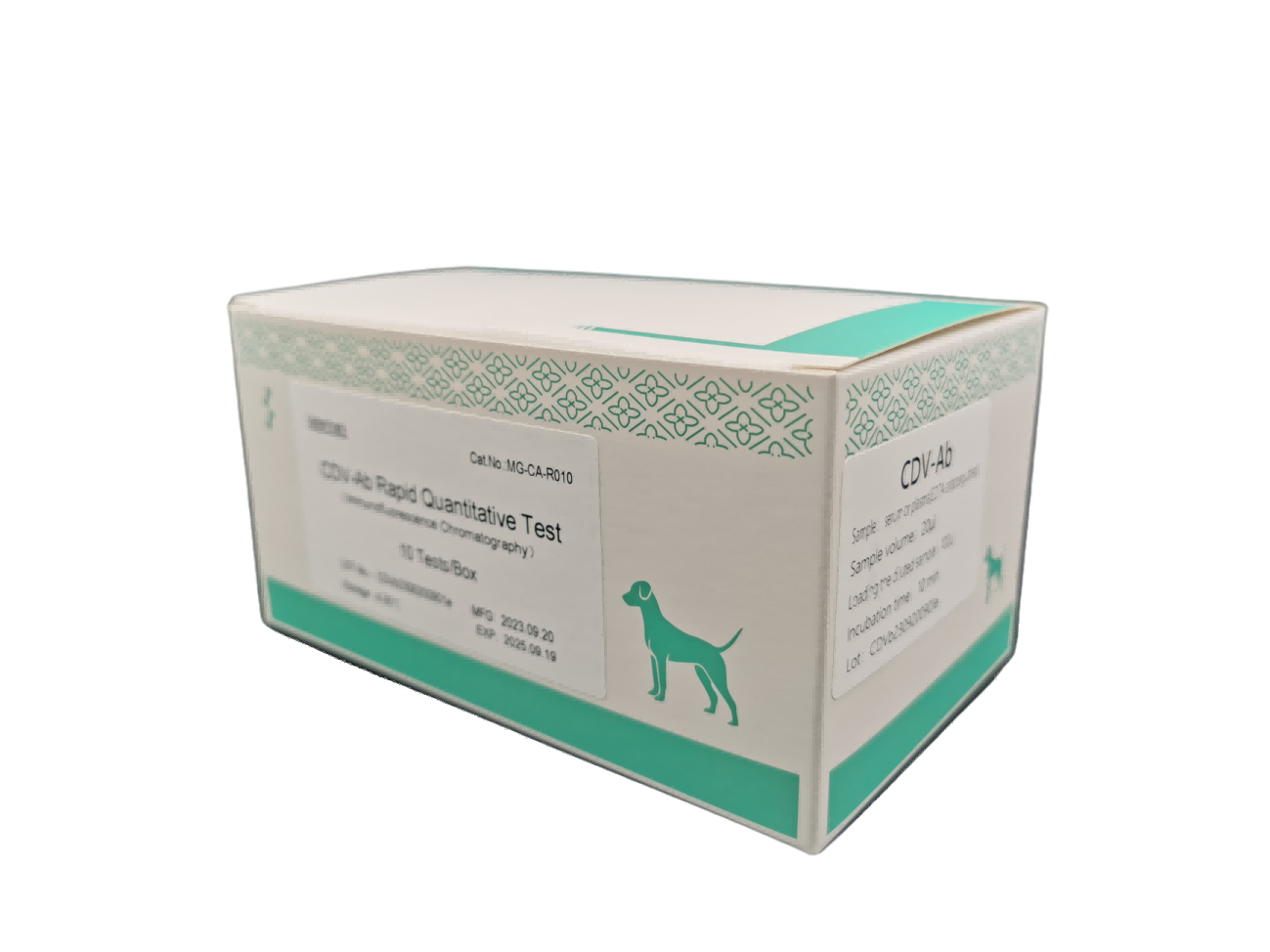SPECIFICATION
10 Tests/Box
Cat. No.: MG-CA-R001
INTENDED USE
The cCRP test is a fluorescence immunoassay designed for use with an Immunofluorescence Analyzer to quantitatively determine cCRP concentrations in canine whole blood, serum, or plasma. It assists in identifying underlying inflammation and monitoring therapy response, post-operative effects, and recovery.
For in vitro diagnostic use only. Professional use only.
TEST PRINCIPLE
This assay uses a quantitative double antibody sandwich fluorescence immunoassay technique. The intensity of the fluorescent signal correlates with the amount of cCRP captured, and results are expressed in mg/L.
MATERIALS
Materials Provided
Each box contains:
10 individual sealed pouches, each containing:
Test Device
Desiccant pouch
1 ID Chip
Instructions for Use
10 tubes of cCRP Sample Buffer
10 Pipette Tips
Materials Required but Not Provided
Immunofluorescence Analyzer
Timer
Pipette
Centrifuge
STORAGE AND STABILITY
Store the test kit at 4°C to 30°C until the expiration date.
Operate the test at 18°C to 28°C after opening the Test Device.
Perform the test within 30 minutes of opening the pouch.
SPECIMEN COLLECTION AND PREPARATION
The test can be performed with serum, plasma, or whole blood (serum or plasma is recommended).
Collect whole blood using EDTA as an anticoagulant.
Separate serum or plasma from blood within 3 hours of collection.
If hemolysis is severe, collect a new sample.
Perform the test immediately after specimen collection. If not possible, store the specimen at 2°C to 8°C for up to 72 hours. For long-term storage, freeze below -20°C.
Bring all materials to room temperature before use. Thaw frozen specimens completely and mix well. Avoid multiple freeze-thaw cycles.
TEST PROCEDURE
Refer to the Immunofluorescence Analyzer Operation Manual for detailed instructions.
Place the Test Device on a clean, level surface.
Insert the ID Chip into the analyzer and confirm the Test Device lot matches the ID Chip.
Pipette 10 μl of the prepared sample into the cCRP Sample Buffer and mix gently. Avoid vigorous shaking and foaming.
Add 100 μl of the mixed sample to the sample well (S) of the Test Device, avoiding bubbles.
Test Modes:
a) Standard Test: Select “Standard Test”, insert the Test Device into the analyzer, and select the sample type (“Whole Blood” or “Serum/Plasma”). The analyzer will start automatically.
b) Quick Test: Select “Quick Test”, start the timer after adding the sample, and let the Test Device sit at room temperature for 3 minutes. Insert the Test Device into the analyzer and select the sample type.
Results will be displayed, printed automatically, or manually by clicking “Print”.
QUALITY CONTROL
Each cCRP Rapid Quantitative Test includes an internal control. If the internal control fails, the analyzer will display an error message and another test should be performed.
INTERPRETATION
Reference range for cCRP in canine serum, plasma, or whole blood:
Each laboratory should establish its reference range.
WARNINGS AND LIMITATIONS
For in vitro diagnostic use only.
Do not use if packaging or devices are damaged.
Do not use beyond the expiration date.
Use a new pipette tip for each specimen.
Technical errors, procedural variations, or interfering substances may cause incorrect results.




